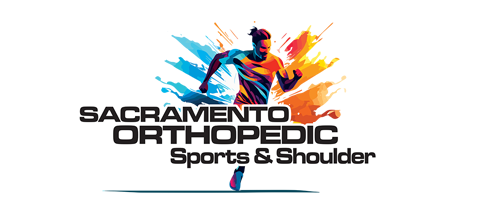Hiking is an incredible way to stay active and enjoy the outdoors, but if you don’t prepare properly, you may face pain or setbacks. In this guide, we’ll explore how to prevent orthopedic injuries while hiking, so you can hit the trail with confidence and strength.
At Sacramento Orthopedic Sports & Shoulder, we help athletes and outdoor enthusiasts prevent injuries and recover stronger. Based on over 15 years of orthopedic experience, I’ve seen how the right preparation can make all the difference. This article shares expert advice to help you prevent orthopedic injuries while hiking — so you can keep doing what you love, pain-free.
Common Orthopedic Injuries on the Trail
Hiking can be demanding, especially on uneven ground or steep inclines. The most common orthopedic injuries we see include:
- Ankle sprains
- Knee pain (patellar tracking issues, meniscus strain)
- Shin splints
- Plantar fasciitis
- Lower back strain
- Achilles tendinitis
- Shoulder or neck pain from backpack strain
These injuries aren’t exclusive to athletes — they can affect anyone who hikes without proper conditioning or gear.
10 Ways to Prevent Orthopedic Hiking Injuries
1. Choose the Right Footwear
Supportive, well-fitting hiking boots can prevent rolled ankles, arch pain, and blisters. Look for boots with firm ankle support, quality traction, and cushioning. Break in new shoes with shorter hikes before using them on long or difficult trails.
2. Use Trekking Poles on Descents and Uneven Terrain
Trekking poles reduce impact on your knees and provide stability on tricky surfaces. This is especially useful for hikers with a history of knee pain or joint instability.
Research has shown trekking poles can reduce compressive force on the knees by up to 25%.
📚 Source: National Library of Medicine
3. Strengthen Your Core and Lower Body
Strong muscles support your joints and absorb impact. I often recommend hikers focus on:
- Glutes and hamstrings (stabilize hips and knees)
- Calves (support ankle function)
- Core (protects the lower back and spine)
Simple bodyweight exercises like squats, lunges, calf raises, and planks go a long way in injury prevention.
4. Warm Up Before Your Hike
Start each hike with 5–10 minutes of light movement and dynamic stretching. This helps activate your muscles and prepare your joints for uneven terrain. After your hike, spend a few minutes stretching calves, hamstrings, and hips to reduce soreness and stiffness.
5. Wear and Pack Your Backpack Correctly
Poor backpack fit is a common source of shoulder and neck pain. Choose a backpack with:
- A hip belt to transfer weight to your legs
- Adjustable chest straps
- Padded shoulder straps
Pack heavier items close to your back and low in the pack. Your total pack weight should not exceed 20–25% of your body weight.
6. Hydrate and Fuel Your Body
Dehydration and fatigue increase your risk of injury. Drink small amounts of water frequently, and eat light, energy-rich snacks like nuts or dried fruit. For hikes longer than an hour, consider adding electrolytes to your hydration plan.
7. Use Proper Technique on Hills and Descents
Downhill hiking is especially hard on your knees. Bend slightly at the knees, keep your core engaged, and take small steps. Avoid locking your knees or leaning too far back.
If you’re hiking uphill, use your glutes and thighs to power your steps rather than pulling with your back or overreaching with your stride.
8. Start Slow and Build Up Your Distance
Your body needs time to adjust to hiking—especially if you’re coming off an injury or a sedentary season. Begin with flat or moderate trails and work your way up to more challenging hikes.
9. Pay Attention to Pain Signals
Discomfort is common during physical activity—but sharp, stabbing, or persistent pain is not. If something feels wrong, it probably is. Stop, rest, and assess. Ignoring early signs of injury often leads to longer recovery times later.
10. Use Braces or Orthotics if Needed
For some hikers, supportive gear like ankle braces, custom orthotics, or knee sleeves can help prevent injury—especially if you’ve had issues in the past.
If you experience chronic pain or recurring strain during hikes, it’s worth scheduling an orthopedic evaluation to determine whether you’d benefit from targeted support.
When to See a Specialist
You should consult an orthopedic specialist if you experience any of the following:
- Pain that lasts more than a few days after hiking
- Joint swelling or stiffness
- Instability or a “giving out” sensation in your knees or ankles
- Pain that worsens with each hike
- Numbness or tingling in your legs, feet, or shoulders
At Sacramento Orthopedic Sports & Shoulder, we offer personalized treatment plans for hiking-related injuries — from conservative management and physical therapy to advanced surgical options when needed.
Pro Tips from the Trail
Here are a few practical insights I often share with patients before they gear up for a hiking season:
- Pre-hike routine: Light cardio, leg swings, hip circles, calf stretches
- Post-hike routine: Foam rolling, static stretching, hydration
- Injury red flag: Any pain that causes you to alter your gait or posture
- Gear upgrade tip: A good set of insoles can make average boots feel orthopedic-grade
Final Thoughts
Hiking is an incredible way to stay healthy and challenge yourself — but orthopedic injuries can quickly take the joy out of the experience. The good news is that most hiking injuries are preventable with the right training, equipment, and awareness.
If you want to prepare for hiking season, recover from an injury, or get guidance tailored to your body and goals, we’re here to help.
Need Help Before or After the Hike?
Dr. Greg Takenishi and the team at Sacramento Orthopedic Sports & Shoulder specialize in sports medicine and orthopedic injury care.
We help hikers, athletes, and active adults stay strong and pain-free.
Ready to stay pain-free on the trail?
Contact Sacramento Orthopedic Sports & Shoulder to book an appointment with Dr. Greg Takenishi.

